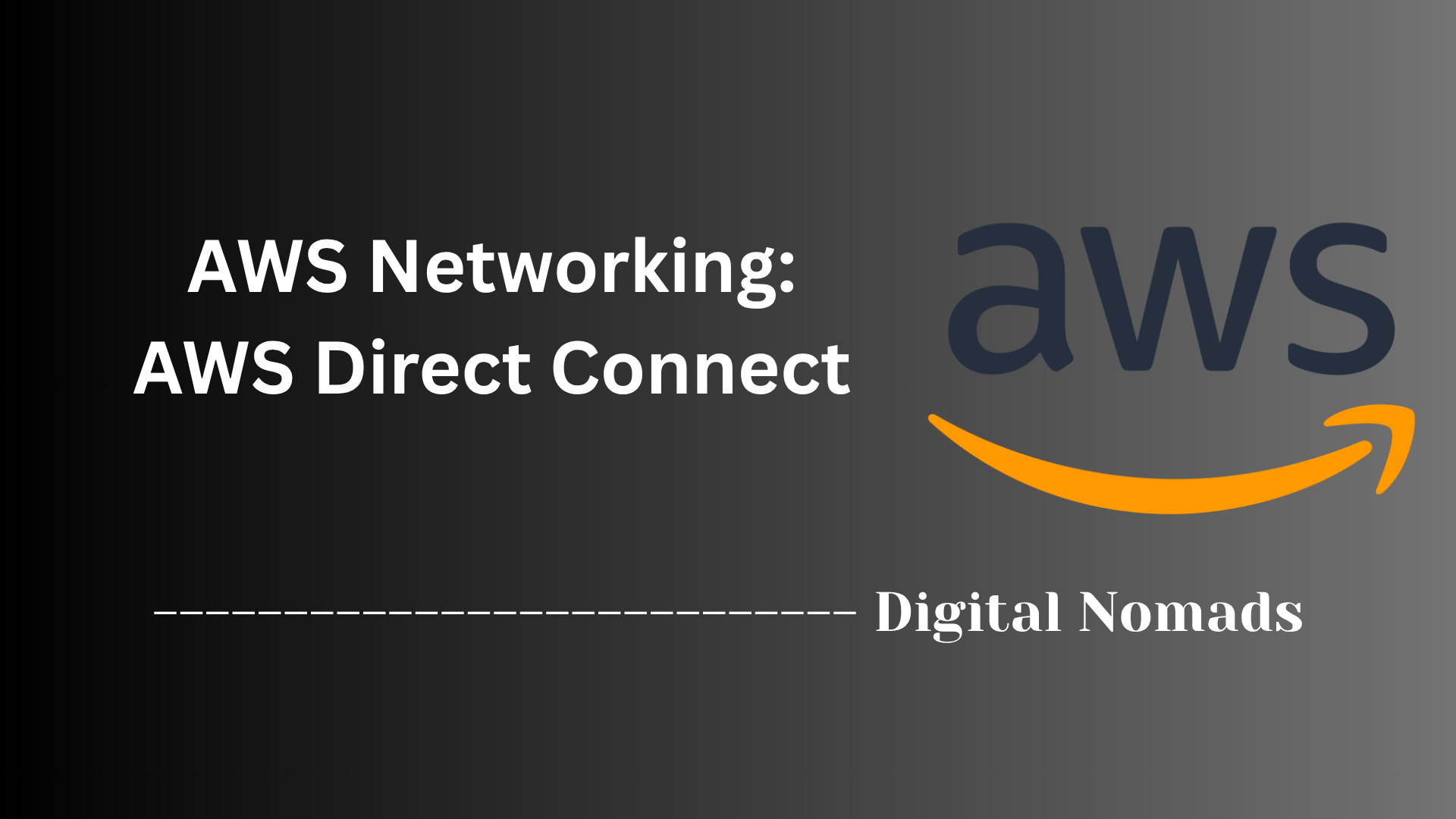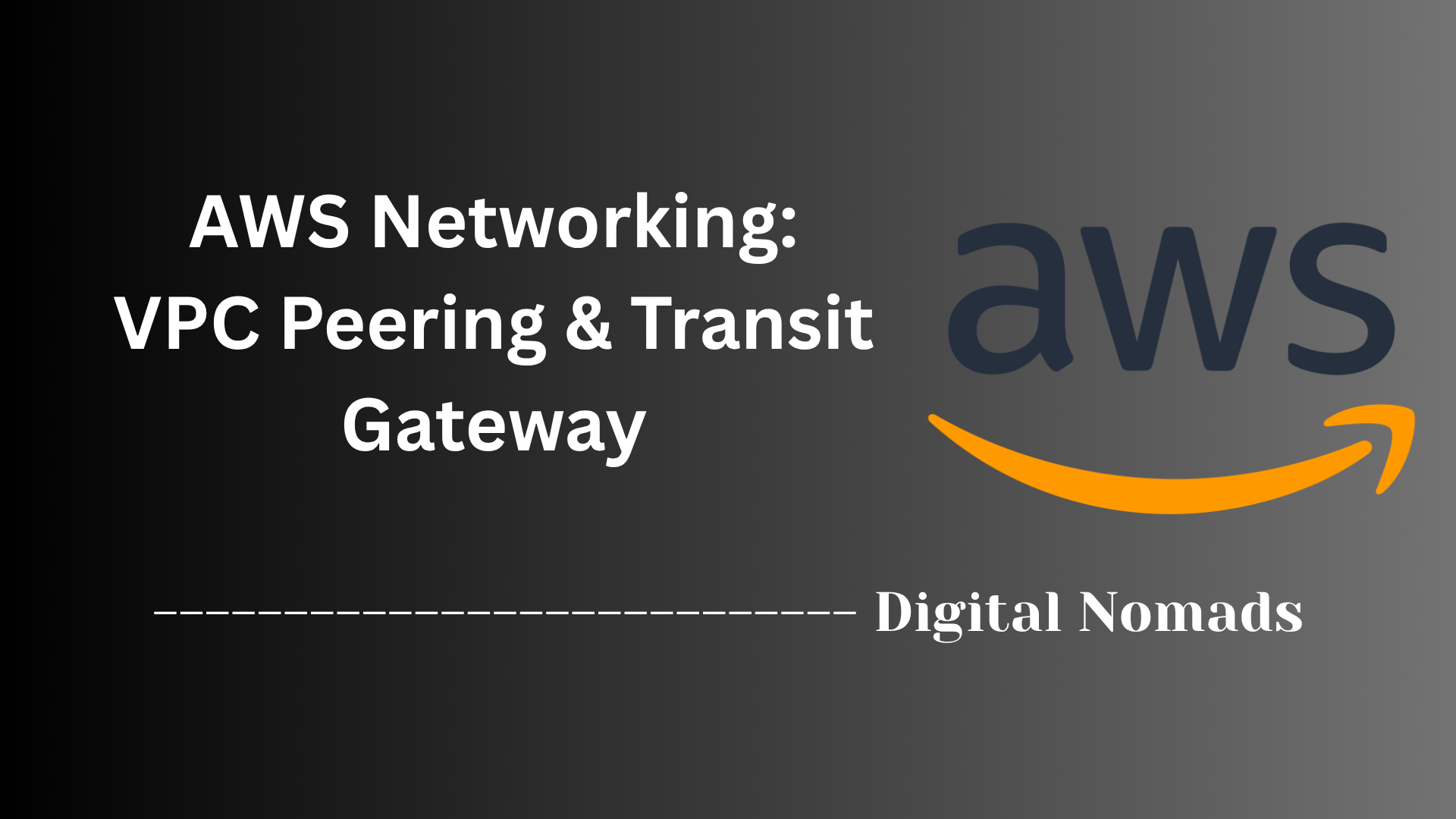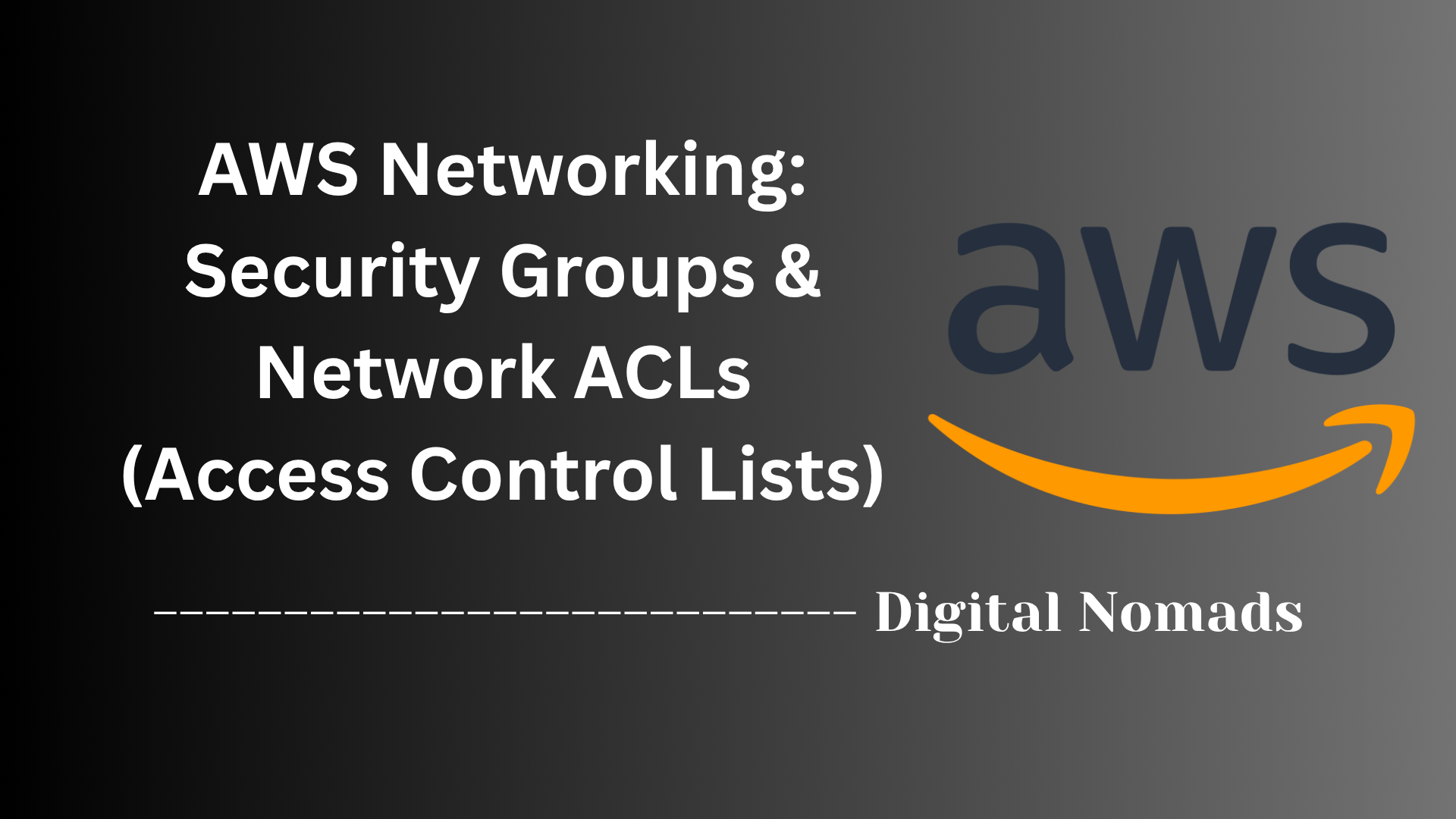Table of Contents
- Overview
- Core Components
- Best Practices
- Rule Configuration Example
- Limitations
- Associated AWS Services
- Creating and Managing AWS Security Groups
- Conclusion
AWS Networking: Security Groups – Overview
What Are AWS Security Groups?
AWS Security Groups are virtual firewalls used to control network traffic for your AWS resources, such as EC2 instances, RDS databases, and more. They operate at the instance level within a Virtual Private Cloud (VPC), allowing you to define rules that specify which incoming and outgoing traffic is permitted to and from your resources.
Why Do You Need to Know About Security Groups?
- Critical for Cloud Security: Security Groups are a foundational security control in AWS, preventing unauthorized access and protecting your applications from both internal and external threats.
- Access Control: They enable you to implement the principle of least privilege by allowing only necessary network communication, significantly reducing your attack surface.
- Compliance & Auditing: Properly managed Security Groups help organizations meet compliance requirements by demonstrating that access to cloud resources is tightly controlled and logged.
- Essential for Day-to-Day Operations: Even basic tasks like connecting to an EC2 instance for maintenance or exposing a web application require properly configured Security Groups.
How Do Security Groups Work?
- Rule-Based Filtering: Each Security Group consists of one or more rules that allow (but never explicitly deny) traffic based on protocol (e.g., TCP, UDP), port numbers, and source or destination IP addresses or CIDR blocks.
- Stateful Nature: Security Groups are stateful, which means if you allow inbound traffic from a certain IP and port, the return outbound traffic is automatically allowed—even if there’s no outbound rule configured for it.
- Default Behaviors: By default, all inbound traffic is denied until explicitly allowed. Outbound traffic is permitted unless restricted by outbound rules.
- Associations with Resources: Security Groups are attached to Elastic Network Interfaces, which are in turn connected to resources like EC2 instances. You can assign multiple Security Groups to a single resource, allowing flexible and layered access policies.
- No Rule Ordering: Rules within a Security Group are evaluated collectively, with no prioritization. If traffic matches any "allow" rule, it is permitted.
- Dynamic Adjustments: Changes made to a Security Group’s rules are enforced immediately for all associated resources, simplifying management and rapid response to security events.
By mastering AWS Security Groups, you gain essential control over who can interact with your cloud resources, how, and from where—a vital step in building robust and secure AWS environments.
Core Components
These are the essential building blocks that make AWS Security Groups a critical element for controlling network access and securing AWS resources:
- Security Group: A virtual firewall at the instance level, assigned to AWS resources such as EC2 instances, RDS databases, or Lambda functions. Security Groups define how traffic is filtered for associated resources.
- Inbound Rules: Explicitly specify which incoming traffic to allow, based on protocol, port range, and source (IP address, CIDR block, or another Security Group). All other inbound traffic is denied by default.
- Outbound Rules: Define which outgoing traffic is permitted from resources in the Security Group, based on protocol, port range, and destination. Outbound rules can be tailored for granular control.
- Network Interface Association: Security Groups are attached to one or more Elastic Network Interfaces (ENIs), and through ENIs, to the AWS resources. This association determines which Security Group rules apply to each resource.
- Stateful Behavior: Security Groups are inherently stateful; if an inbound connection is allowed, the response traffic is automatically permitted, regardless of explicit outbound rules, and vice versa.
- Rule Evaluation: Rules within a Security Group are evaluated collectively (no priority order). Only “allow” rules exist; if traffic matches any rule, it is allowed.
Best Practices
Follow these best practices to maximize the effectiveness and security of your AWS Security Groups:
- Apply the Principle of Least Privilege: Start with no inbound permissions—add only specific permissions required for your use case. Restrict source IP ranges to the minimum necessary, avoiding 0.0.0.0/0 except for public-facing services that absolutely require it.
- Avoid the Default Security Group: Do not use the AWS "default" security group for active resources. Remove all inbound and outbound rules from the default group and create tailored groups for your workloads[2][4].
- Minimize the Number of Security Groups: Group resources with similar access needs under the same security group rather than creating one per instance. This reduces management and auditing complexity[2][4].
- Restrict Inbound & Outbound Rules: Limit access as much as possible by port and protocol. Avoid broad permissions—restrict by IP, CIDR range, and specific ports[4][5].
- Regularly Review and Clean Up Security Groups: Periodically audit your security groups. Remove unused security groups and rules to reduce your attack surface[4].
- Use Descriptive Naming & Tagging: Name security groups clearly by role or function, and use tags for easier management and auditing in larger environments[2].
- Monitor and Log Changes: Use AWS CloudTrail, AWS Config, or Security Hub to monitor and alert on security group changes. Enable VPC Flow Logs to audit traffic[2][4].
- Leverage Security Group References: For resources that must communicate within AWS, reference other security groups (instead of IP addresses) for more dynamic, scalable, and secure rules[4][8].
- Define IAM Policies for Security Group Management: Limit who can create or modify security groups and rules via IAM policies. This helps prevent unauthorized or accidental changes[4][5].
- Avoid Large Port Ranges: Only open the specific ports needed—for example, use TCP 22 for SSH or TCP 3306 for MySQL, rather than wide ranges like 0–65535[4][5].
By adhering to these practices, you ensure a robust, manageable, and auditable network security posture for your AWS workloads.
Rule Configuration Example
Below is a typical example of AWS Security Group rule configuration for a common web application that needs:
- Public HTTP/HTTPS access from anywhere
- Restricted SSH access (from a trusted admin IP or office CIDR)
- Unrestricted outbound traffic by default
| Rule Direction | Protocol | Port Range | Source/Destination | Description |
|---|---|---|---|---|
| Inbound | TCP | 22 | 203.0.113.0/24 | Allow SSH from trusted office/admin IPs |
| Inbound | TCP | 80 | 0.0.0.0/0 | Allow HTTP (web access) from anywhere |
| Inbound | TCP | 443 | 0.0.0.0/0 | Allow HTTPS (secure web access) from anywhere |
| Outbound | All | All | 0.0.0.0/0 | Allow all outbound traffic |
Notes:
- Inbound rules default to "deny all" until explicitly allowed; outbound defaults to "allow all."
- Restrict sensitive ports (like SSH) to known IPs and avoid 0.0.0.0/0 for these except where absolutely necessary.
- Descriptions are for clarity and do not affect rule enforcement[1][5].
Limitations
While AWS Security Groups provide essential firewall capabilities for your cloud workloads, there are several limitations to keep in mind:
- Allow-Only Rules: Security Groups can only permit (allow) traffic; there are no explicit deny rules. The absence of an allow rule means traffic is implicitly denied. For scenarios requiring explicit blocks, use Network ACLs at the subnet level[4][15].
- No Rule Ordering: All rules within a Security Group are evaluated collectively. There is no prioritization or rule order—if any rule permits traffic, access is granted[6].
- Rule and Group Quotas: There are limits on the number of Security Groups (typically 2,500 per Region), and on the number of rules per Security Group (60 inbound and 60 outbound by default). Each network interface can be attached to a limited number of Security Groups (usually 5)[1][4][17].
- Stateful Only: Security Groups are inherently stateful. If ingress is allowed, responses are automatically allowed out—even if corresponding outbound rules are not present[15].
- Cannot Filter Certain Traffic: Security Groups do not filter certain AWS-internal traffic types, such as traffic to Amazon DNS, DHCP, EC2 instance metadata, and the VPC router. Separate solutions (like Route 53 Resolver DNS Firewall) are needed to control some of this traffic[2].
- No Domain/URL Filtering: Rules only work with IPs, CIDRs, or other Security Groups. You cannot filter traffic by domain names or URLs without additional third-party solutions or NAT gateways[4][5].
- VPC and Region Scope: Security Groups are region- and VPC-specific. You cannot use a Security Group across different VPCs or Regions, except through VPC peering with limitations[15].
- No Logging of Rule Hits: Security Groups do not provide native logs for individual rule matches or hits. You can use VPC Flow Logs or AWS CloudTrail to monitor traffic and changes at a higher level[2].
Summary: Understand these constraints to design layered and effective security, and combine Security Groups with other AWS tools—like Network ACLs, VPC Flow Logs, and third-party appliances—to address advanced or granular requirements.
Associated AWS Services
Security Groups operate with and are enhanced by several AWS services to provide comprehensive security, management, and monitoring capabilities:
- AWS Identity and Access Management (IAM): Use IAM policies to tightly control who can create, modify, or delete Security Groups and their rules. Fine-grained permissions ensure only authorized users can make security-critical changes[6][16].
- AWS CloudTrail: CloudTrail logs every API call that affects Security Groups, enabling you to monitor, audit, and alert on changes for compliance and threat detection[7][12].
- AWS Config: Track and audit configuration changes to Security Groups over time. AWS Config can detect non-compliance or unwanted modifications and trigger remediation steps automatically[12].
- Amazon VPC Flow Logs: Capture granular details about accepted or rejected traffic to and from resources protected by Security Groups. Analyze flow logs in CloudWatch or S3 to audit network behavior and troubleshoot connectivity or security issues[8][9][14][19].
- Tagging Services: Add tags to Security Groups and, in some cases, to rules themselves for easier inventory management, cost allocation, and automation through scripts or resource management tools[8][13].
- Amazon EC2, RDS, Lambda, and Load Balancers: Security Groups are core controls for these compute and database services, as well as for Elastic Load Balancing, to regulate network access at the resource level[3][5].
- Amazon CloudWatch & SNS: Use CloudWatch for real-time monitoring and create alerts on Security Group changes or suspicious activity. Pair with Amazon SNS to notify security teams when key events are detected[7].
Working together, these services help you automate security, achieve stronger compliance, conduct real-time monitoring, and improve visibility and control over your AWS environment.
Creating and Managing AWS Security Groups
Follow these steps to create, configure, and manage Security Groups in AWS, ensuring precise control over network access to your resources:
- Access the AWS Console: Sign in to your AWS account and open the EC2 Dashboard or VPC Console where Security Groups are managed[2][5].
- Navigate to Security Groups: On the left navigation pane, select Security Groups under either EC2 or VPC.
- Initiate Security Group Creation: Click the Create security group button to start defining a new Security Group.
- Enter Basic Details: Provide a descriptive Name and Description for easy identification. Select the VPC where this group will reside (cannot be changed later).
-
Configure Inbound Rules:
- Click the Inbound rules tab, then Add rule.
- Define the protocol (e.g., TCP), port range, and source (IP address, CIDR, or another security group).
- Optionally, add a description for each rule for clarity during audits[2][5].
-
Configure Outbound Rules:
- Select the Outbound rules tab and Add rule as needed. Outbound rules dictate what network traffic can leave your resources.
- You can restrict outbound access or allow all traffic by default.
- (Optional) Add Tags: Tags help organize, manage, and filter security groups for automation and cost control.
- Review and Create: Double-check all settings and rules, then click Create security group to finalize[2][5].
Managing Existing Security Groups:
- Edit Rules: Select a Security Group, click Edit inbound/outbound rules to add, update, or remove rules as requirements change.
- Associate with Resources: Attach Security Groups to EC2 instances, RDS databases, or network interfaces during creation or by modifying resource attributes.
- Delete Unused Groups: Periodically review and delete Security Groups you no longer need to maintain a secure environment[5].
- Automation: Use the AWS CLI or Infrastructure-as-Code tools (such as CloudFormation or Terraform) to script creation and changes for scale and repeatability[2][4].
Tips:
- Security Groups are VPC- and region-specific—you cannot share them across regions or VPCs without peering or migration steps[2].
- Regularly review Security Group associations and rules to align with evolving security needs.
- Use descriptive naming and tagging for easier identification and auditing.
Conclusion
Throughout this blog post on AWS Networking: Security Groups, we've explored how Security Groups form the backbone of network-level security across your AWS infrastructure. These virtual firewalls are powerful, flexible, and essential for enforcing access control to your cloud resources. Here's a quick recap of the key takeaways:
- Security Groups are stateful—what you allow in, AWS automatically allows back out, and vice versa, reducing redundant rule configurations.
- They operate on a principle of least privilege, meaning you must explicitly define what traffic is allowed; everything else is implicitly denied.
- Core components include inbound and outbound rules, network interface associations, and group references, all of which help precisely define your traffic flow.
- Best practices include limiting access, avoiding default groups, tagging effectively, and regularly auditing rules to keep your security posture strong and organized.
- We showcased a Rule Configuration Example, giving you a template you can easily adapt to your workloads.
- We also examined the limitations of Security Groups—such as IP-only filtering and lack of deny rules—which highlight the need for layered security using tools like NACLs and VPC Flow Logs.
- Several associated AWS services, including IAM, CloudTrail, AWS Config, and EC2, enhance what you can do with Security Groups in terms of automation, monitoring, and role-based access.
- Finally, we walked through how to create and manage Security Groups step-by-step, both via the AWS Console and through infrastructure-as-code or CLI options for repeatability and scale.
Whether you're spinning up your first EC2 instance or managing an enterprise-scale AWS environment, Security Groups are one of the most effective and versatile tools in your cloud toolbox. Taking the time to plan, implement, and monitor them properly can prevent everything from minor misconfigurations to major security incidents.
That wraps up our deep dive into AWS Security Groups—hopefully, you're walking away with more clarity, confidence, and control over your cloud networking strategy. Thanks for reading, and happy building in the cloud! ☁️🚀




